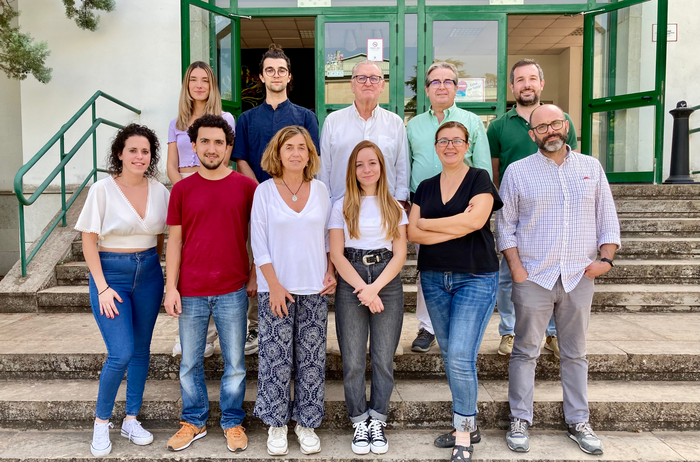The University of Córdoba’s research team has identified a novel transcription factor that controls the development of the anthocyanins that give strawberries their distinctive red color as the fruit ripens.
 Research team of group HIBRO. Image Credit: University of Cordoba
Research team of group HIBRO. Image Credit: University of Cordoba
The strawberry is a unique fruit in terms of color, flavor, texture, and scent. These characteristics, referred to as organoleptic features, are present during the strawberry’s ripening phase and affect its quality, the preferences of potential buyers, and the insects that disseminate the seeds, encouraging the growth of future plants.
The University of Cordoba’s Biotechnology and Plant Pharmacognosy research group, led by Juan Muñoz Blanco, has been studying the genetic regulation of strawberry ripening for several years.
By identifying a new protein involved in the regulation of the production of the fruit's red color, they have now advanced their understanding of this important process. It is referred to as a transcription factor protein (FaMYB123), which controls the expression of other genes by either activating or repressing them.
The study, which is part of Félix J. Martnez-Rivas’ PhD thesis and was conducted by a researcher trained at the UCO, was released in The Plant Journal. Anthocyanins, the pigments that give strawberries their distinctive red color, are produced primarily as a result of this transcription factor.
They developed a transgenic strawberry plant in which they suppressed the expression of the FaMYB123 transcription factor to confirm this, and they discovered that the number of anthocyanins was more suppressed in those transgenic plants than in typical fruit. In other words, the strawberry does not fully display its red color without the transcription factor mentioned.
But since transcription factors do not function individually but rather in combinations, this protein does not generate it by itself. The team of researchers discovered that FaMYB123 is connected to another previously identified factor (FabHLH3), which is likewise connected to strawberry pigmentation, in this circumstance. During their ripening, the two interact, which increases the formation of anthocyanins.
In a nutshell, the study adds to the current understanding of how strawberry ripening is controlled.
Knowing which piece of the puzzle controls each part of the ripening process—in this case, the color red—then allows us to manipulate it genetically, or use it as a tool in breeding programs in which different varieties are mixed to create new ones.”
Francisco Javier Molina Hidalgo, Postdoctoral Researcher, University of Cordoba
In a country like Spain, which is Europe’s top producer of strawberries, with the province of Huelva at the top of the list, understanding the ripening process in greater depth is essential.
Source:
Journal reference:
Martínez-Rivas, F.J., et al. (2023). FaMYB123 interacts with FabHLH3 to regulate the late steps of anthocyanin and flavonol biosynthesis during ripening. The Plant Journal. doi.org/10.1111/tpj.16166